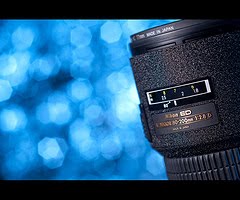
Accuracy is Critical. The wedding day presents the ultimate in exposure extremes (a black tuxedo and a white wedding dress), and when shooting digitally (especially JPEGs) the exposure latitude is virtually nonexistent. Underexposed digital files tend to have an excessive amount of noise; overexposed files lack image detail in the highlights. You must be right on with your exposures when shooting JPEGs. If you make an error, though, let it be in the direction of slight underexposure, which is survivable. Overexposure of any kind is a deal breaker. You must also guarantee that the dynamic range of the processed image fits that of the materials you will use to exhibit the image (i.e., the printing paper, ink, or photographic paper).
Meters. The preferred meter for portraits is the handheld incident light meter. This measures the amount of light falling on the scene (rather than the reflectance of the subjects) and yields extremely consistent results, because it is less likely to be influenced by highly reflective or light-absorbing surfaces. To use this meter, simply stand where you want your subjects to be, point the dome of the meter directly at the camera lens and take a reading. If you can’t physically get to your subject’s position, meter the light at your location (if it is the same as the lighting at the subject position). A handheld incident flashmeter is also invaluable when using multiple strobes and when trying to determine the overall evenness of lighting in a
large room.
Meter Calibration. Like all mechanical instruments, meters can get out of whack and need periodic adjustment to ensure accuracy. Therefore, it is advisable to run periodic checks on your handheld and in-camera meters; after all, you base the majority of your exposures on their data. If your incident meter is also a flashmeter, you should check it against a second meter to verify its accuracy.
Quick Exposure Evaluation. There are two ways to quickly evaluate the exposure of the captured image. First, the LCD monitor provides a quick visual reference for making sure things are okay in terms of the sharpness and exposure. For more accurate feedback, however, you should review the histogram. This is a graphic representation of the number of pixels at each brightness level. The range of the histogram represents 0–255 from left to right, with 0 indicating “absolute” black and 255 indicating “absolute” white. In an image with a good range of tones, the histogram will fill the length of the graph and (in most cases) trail off on either end. When an exposure has detailed highlights, these will fall in the 235–245 range; when an image has detailed blacks, these will fall in the 15–30 range (RGB mode).
0 comments:
Post a Comment